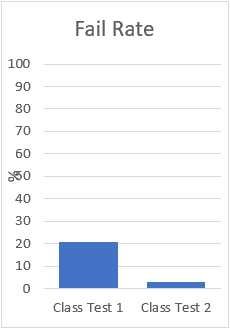Introduction
The Ideas Bank is one of the most popular and influential areas of the Economics Network site. Each case study focuses on a particular innovation, addressing the following questions:
- What is the context (what course(s) are you doing this in, at what level and with how many students)?
- What was its purpose?
- How did it work?
- How did the students respond?
- What did you learn from the process (including what problems were encountered and what you would do differently in future)?
Case study or paper?
| Ideas Bank | Journal publication, e.g. IREE |
|---|---|
| Short case studies (usually 2–4 pages; 1,000–1,500 words) | Fully developed papers |
| Light copy-editing if necessary; review by an academic for first-time contributors | Full peer review |
| Accepting submissions from university educators describing practice they have used in teaching economics | Significant proportion of submissions rejected |
| Rapid publication: often within a week | Review and publication process can take months |
| Given a Digital Object Identifier and indexed by CrossRef and other citation databases | Given a Digital Object Identifier and indexed by ScienceDirect and other citation databases |
| No charge to authors or readers | Might be published behind a paywall or incur an open access charge |
It is possible to publish an idea as a short case study and develop it later into a full paper.
Instructions for authors
- Please submit your case study in an email to m.l.poulter@bris.ac.uk , to whom you can address any questions not answered by this page. Written case studies should be in a word processor format (doc, docx or rtf). We also accept video case studies; see the separate section below.
- Long titles cause problems for our software. Titles should be a maximum of 100 characters long.
 Charts are another way to add visual interest.
Charts are another way to add visual interest.We like case studies to be visually interesting. If your case study talks about a piece of software, please include at least one screenshot so that readers can see what is involved.
- The suggested length of 1,000 to 1,500 words is just a guide, and each case study will be judged on its own merits. If your draft is shorter than this, you are probably not giving enough detail about what you have done and how other lecturers could replicate it.
- Case studies need a few headings to give a structure; different for each case study, but following a pattern like Background, Method, Outcomes, Conclusion, References. Headings should be short. Sub-headings are possible but rarely needed in a case-study. Two levels should be enough, i.e. no sub-sub-headings.
- If you have an ORCID (Open Research Contributor IDentifier) then please include it with your submission. We can add the case study automatically to your ORCID profile. Some universities create ORCIDs for their staff, so you might have one that you did not personally create. Lack of an an ORCID does not affect the treatment of your case study.
- The case study should make clear what it is you are trying to do, and this sometimes involves spelling out the learning objectives of your module. However, the case study should be less about what you hoped to achieve, and much more about what you did. That you want students to be actively engaged in learning, in an inclusive environment, acquiring useful skills, doesn't need to be spelled out repeatedly. We're more interested in what decisions you faced when trying to achieve these aims, and how you handled any trade-offs.
- If you include links or DOIs (Digital Object Identifiers) for your references, that saves us time and allows quicker publication.
- If this is your first time writing a case study for us, your draft might be put through an anonymous peer review process. This will add a bit of delay to the process but may give you feedback that can improve the draft.
- You might be able to create a case study by repurposing material you've already published, for example for a newsletter within your institution. Check with the original publishers that this is okay. Conference presentations can also be developed into a case study. Once it is published, you do not need our permission to repurpose your case study into a paper or other publication.
- If any text in your case study is generated or rewritten by AI (for example to illustrate how chatbots respond to certain questions), please indicate this clearly in the document. Using tools to suggest grammar or tone improvements to your writing is fine, but the main text of a case study should be free of AI-generated text.
- Each case study is put into categories. You can indicate up to two of the categories on the Ideas Bank home page that are most relevant to your case study. Alternatively, it's fine to leave the choice to us.
Video case studies
We also accept case studies in video format. We publish them with a transcript generated by editing YouTube's automatic subtitles. See an example.
The content needs to be more than just a "quick tip" of how to use a technology. This is an opportunity to demonstrate something you do with software or with a web site, but you need to describe a practice that you have used in university education of economics and how it benefits students.
You need to make the video file available to us for posting on the Economics Network YouTube channel or post it on your own YouTube channel, non-monetised. (Here is how to turn off monetisation for a video).
↑ Top
